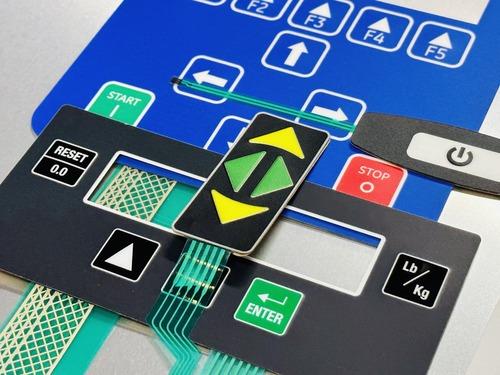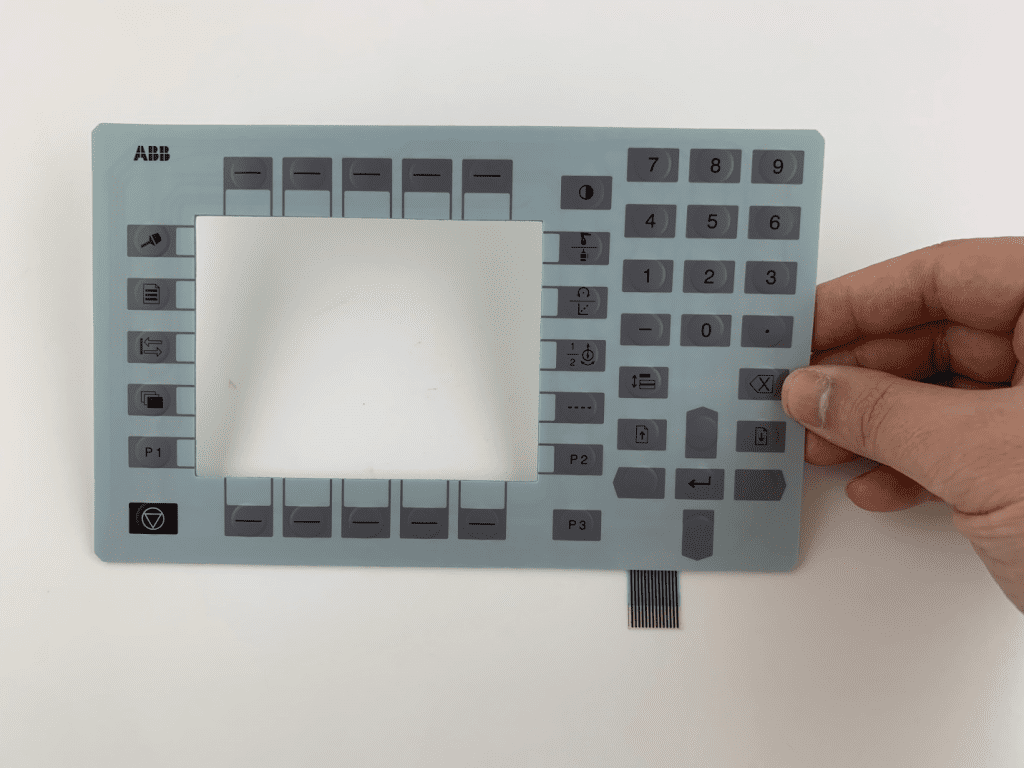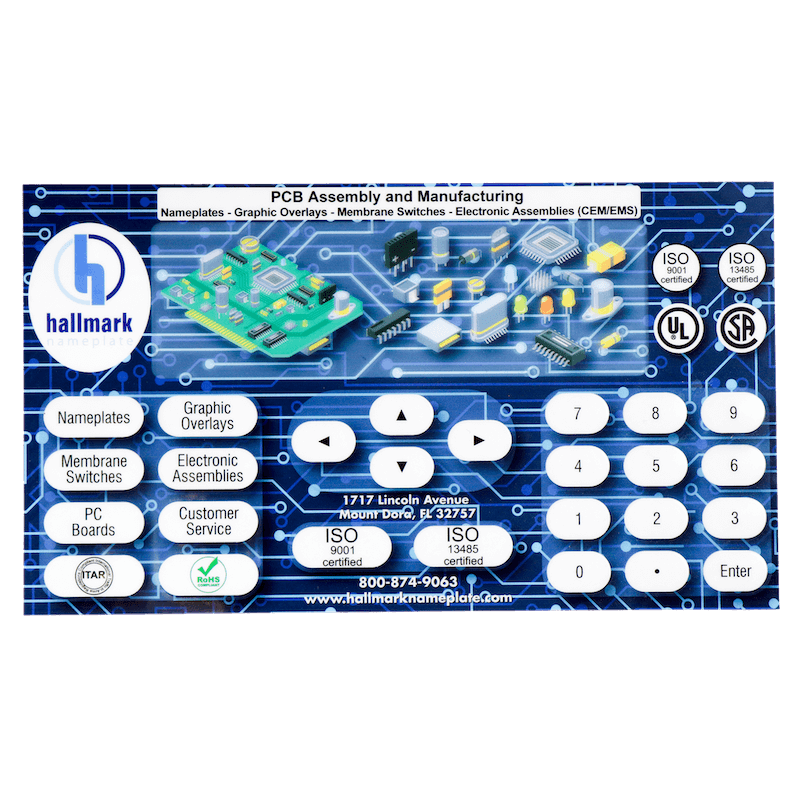Recognizing the Significance of Membrane Switches in User Interfaces
Membrane buttons are essential parts in the style of effective customer interfaces, assisting in not just performance but also boosting aesthetic appeal and individual communication. Their one-of-a-kind attributes, such as resistance to environmental factors and personalized designs, make them appropriate for a diverse range of applications throughout several sectors. As we check out the various benefits and future fads connected with Membrane innovation, it comes to be clear that these buttons are much more than simply components; they stand for a convergence of advancement and functionality. The ramifications of this innovation on user experience are worth checking out even more.
What Are Membrane Buttons?

The spacer layer, which has sticky residential properties, enables for the separation of the circuit layer from the overlay, making sure that the button stays in a non-activated state until pushed. When pressure is related to the overlay, it compresses the spacer layer, linking the space and finishing the circuit in the underlying layer. This design not only lowers the physical space needed for traditional mechanical buttons however additionally enhances the durability of the device, as Membrane buttons are generally resistant to dust, wetness, and other ecological elements.
Typically located in applications ranging from consumer electronic devices to clinical gadgets, Membrane switches are integral to modern innovation, supplying a straightforward and reliable user interface that aligns with modern layout demands.
Advantages of Membrane Switches
While numerous button modern technologies exist, Membrane Switches offer distinct advantages that make them especially desirable in different applications. Among the key benefits of Membrane switches is their compact layout, which permits space-saving applications in gadgets where realty is limited. Their thin profile not only improves aesthetic allure but additionally facilitates lightweight construction.
Another significant advantage is their resistance to ecological aspects. Membrane buttons are commonly secured against wetness, dirt, and pollutants, making them suitable for use in demanding atmospheres, such as medical devices and commercial devices. This longevity prolongs the life-span of the switch, lowering upkeep expenses and enhancing integrity.
Additionally, Membrane buttons can be personalized to meet certain layout needs, including special graphics and shades that improve individual communication. Their tactile responses options can also be tailored to offer a gratifying customer experience. In addition, Membrane buttons are cost-efficient, particularly in high-volume applications, as they can be generated successfully.
Applications in Various Industries

In the customer electronics market, Membrane buttons are common in tools such as microwaves, cleaning equipments, and push-button controls. Their responsive comments and aesthetic alternatives boost link individual experience while providing a smooth, modern-day appearance. Furthermore, automotive makers make use of Membrane buttons in control panel controls and infotainment systems, where room is limited, and individual involvement is vital.
Moreover, the commercial field leverages Membrane switches in control panels for equipment and tools, permitting user-friendly procedure in typically extreme settings. Their resistance to chemicals and moisture guarantees durability and integrity in these applications. Overall, the flexibility of Membrane Switches contributes significantly to their widespread use, making them important in various technological domain names.
Style Considerations for Membrane Switches

When making Membrane buttons, several crucial factors to consider need to be considered to ensure ideal performance and customer experience. Firstly, the selection of products is important; picking resilient, high-grade substrates can boost the button's durability and resistance to ecological aspects such as dampness and temperature fluctuations.
Secondly, the layout of the visuals overlay need to focus on quality and ease of use. Icons and text must be legible, and the layout needs to promote user-friendly interaction (membrane switches). Additionally, tactile comments is vital; incorporating a tactile dome or other mechanisms can boost the customer experience by giving physical verification of activation
Another essential factor is the switch's electrical performance. Developers need to make certain that the conductive traces are correctly developed to lessen resistance and avoid signal disturbance. This involves assessing the needed actuation pressure and guaranteeing compatibility with the digital elements they will user interface with.

Future Trends in Membrane Innovation
As technology continues to breakthrough, Membrane buttons are poised to progress considerably, driven by innovations in materials and look at these guys producing techniques. One emerging fad is the consolidation of innovative materials, such as conductive inks and flexible substratums, which improve sturdiness and decrease the general weight of Membrane switches. These materials not just improve the tactile action yet likewise permit the design of buttons that can stand up to harsher ecological problems.
In addition, the combination of touch-sensitive technologies is transforming conventional Membrane Switches into even more interactive individual interfaces. Capacitive touch sensors installed within Membrane button panels can give a more responsive and user-friendly customer experience, lining up with the expanding demand for streamlined, modern-day layouts in customer electronic devices.
Additionally, developments in printing methods, such as electronic and 3D printing, enable fast prototyping and personalization of Membrane switches. This versatility enables makers to react faster to market needs and consumer preferences.
Finally, sustainability is becoming a significant emphasis, with suppliers discovering green products and procedures. As these patterns unfold, the future of Membrane modern technology assures improved performance, aesthetic appeal, and ecological duty, solidifying their role in advanced customer interfaces throughout different industries.
Conclusion
In verdict, Membrane Switches stand for an essential element in the design of customer interfaces, incorporating functionality with visual versatility. Their advantages, consisting of longevity and resistance to ecological elements, make them suitable for varied applications across numerous markets. Thoughtful layout considerations enhance individual interaction and experience. As innovations in innovation proceed, the development of Membrane switches is anticipated to further improve interface, driving technology and enhancing use in a progressively complex technological landscape.
Membrane buttons are integral elements in the style of reliable user interfaces, helping with not just capability but likewise improving visual allure and user interaction.Membrane Switches offer as a vital component in different individual interfaces, promoting a seamless interaction between individuals and digital tools.While numerous switch innovations exist, Membrane Switches deal distinctive benefits that try here make them specifically preferable in various applications.Furthermore, Membrane switches can be personalized to satisfy certain layout needs, including unique graphics and colors that enhance user communication.In verdict, Membrane Switches stand for a crucial part in the layout of customer interfaces, incorporating capability with visual versatility.
Comments on “Membrane Switches vs. Traditional Switches: What You Need to Know”